DSKY Moonwatch brings mini Apollo space computer to people's wrists
The computer interface of NASA's 1960s Apollo spacecraft is meticulously replicated in miniature in the DSKY Moonwatch, a multifunctional timepiece created by British start-up Apollo Instruments. The DSKY Moonwatch recreates the instruments of the Apollo DSKY, the computer interface used by astronauts on NASA's moon missions to guide and navigate the spacecraft. Made of ceramic-coated The post DSKY Moonwatch brings mini Apollo space computer to people's wrists appeared first on Dezeen.
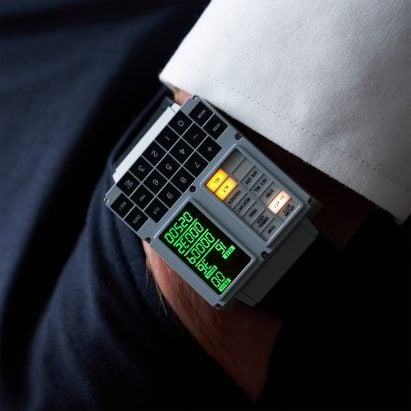
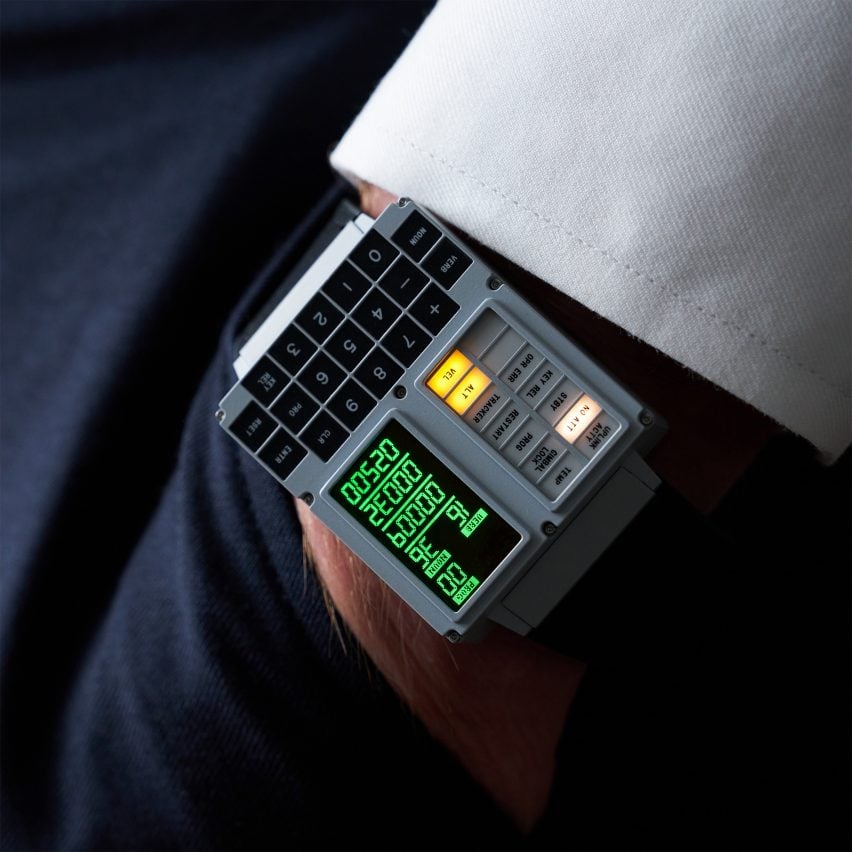
The computer interface of NASA's 1960s Apollo spacecraft is meticulously replicated in miniature in the DSKY Moonwatch, a multifunctional timepiece created by British start-up Apollo Instruments.
The DSKY Moonwatch recreates the instruments of the Apollo DSKY, the computer interface used by astronauts on NASA's moon missions to guide and navigate the spacecraft.
Made of ceramic-coated stainless steel, the watch includes a micro-LED screen with green digits and a mini annunciator panel – the light-up display in an aircraft that indicates the status of various equipment or systems.
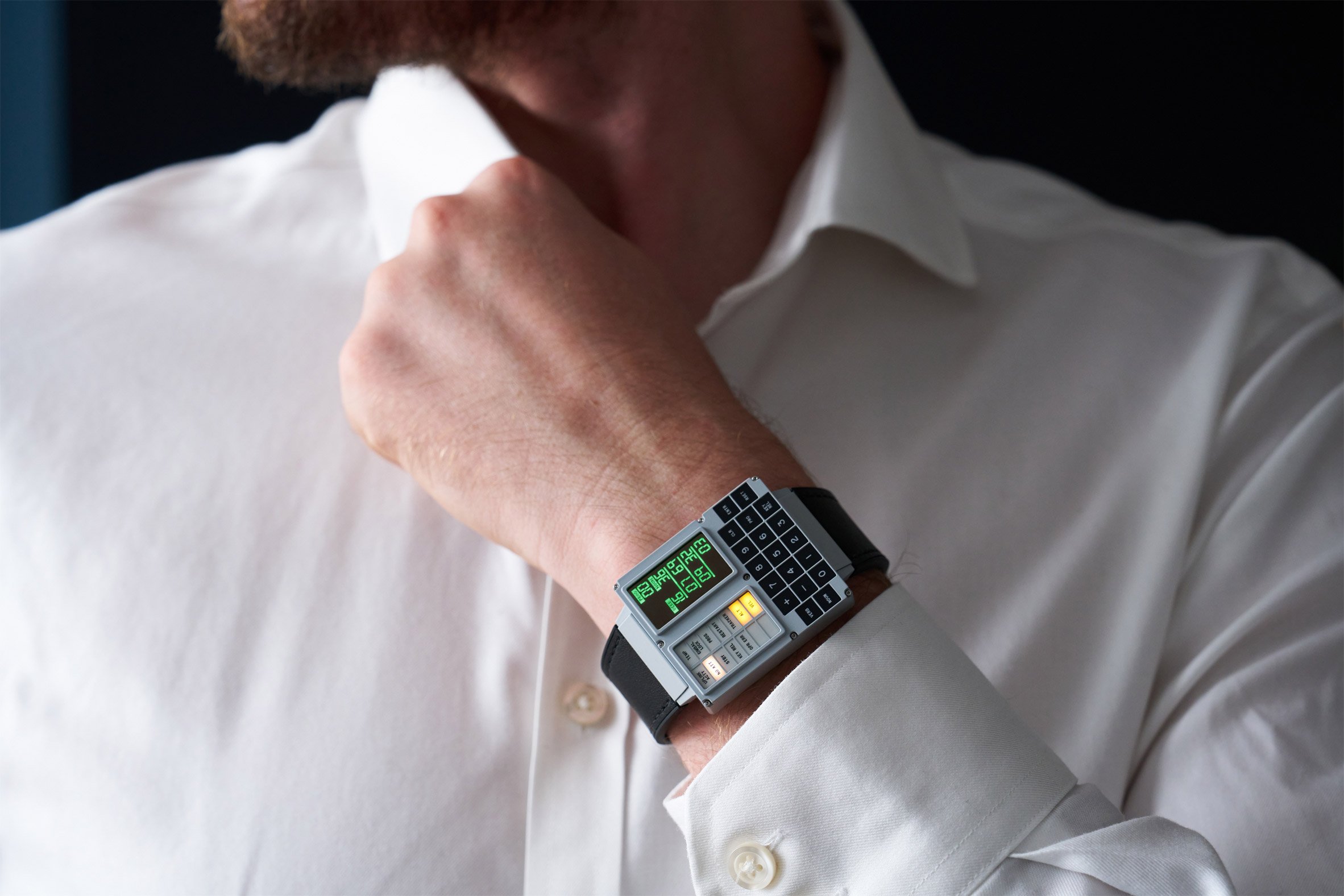
Below them is a tiny keypad with numbers and commands such as "noun" and "verb", which are used to request various functions.
The original DSKY was developed by the MIT Instrumentation Laboratory and continues to be highly regarded, especially for its simple, calculator-like design that gave astronauts without extensive computing know-how a straightforward way to interact with Apollo's advanced onboard computer.
Its name is an abbreviation of the words "Display and Keyboard" and is usually pronounced "diss-key". Apollo Instruments aimed to satisfy the DSKY's enduring fan base with an object that is made of high-grade materials and accurately represents even the system's smallest details, such as colour and font.
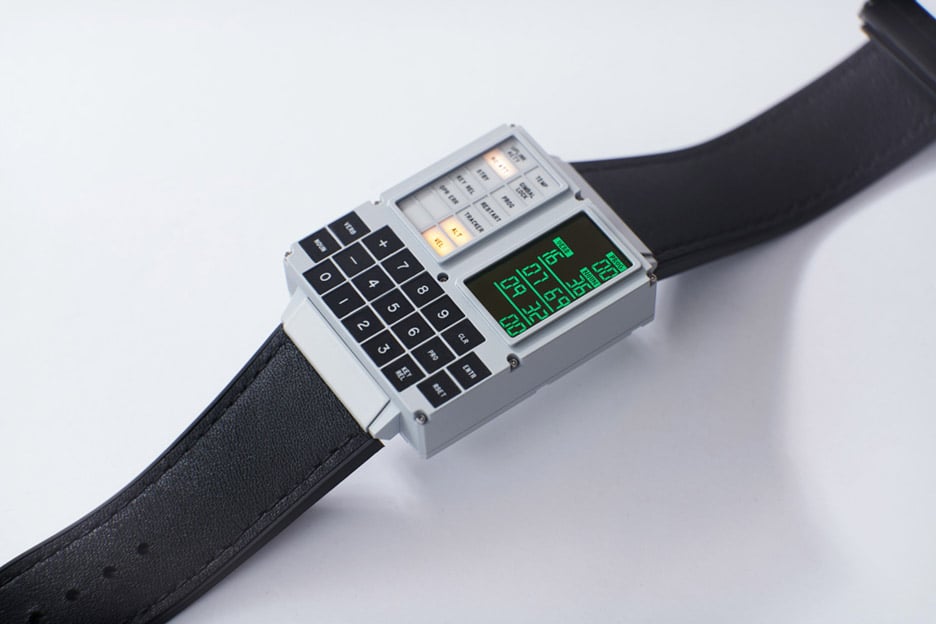
"We are driven to commemorate the legacy of the Apollo space programme and the courage of its astronauts through a tribute that genuinely celebrates the remarkable achievements and sacrifices they made to present to the world mankind's greatest adventure," Apollo Instruments founder and CEO Mark Clayton told Dezeen.
"A significant amount of time was invested researching the original NASA and MIT archives to ensure the most authentic and aesthetically accurate reproduction was achieved. To this end, our DSKY Moonwatch is an accurate 4.6:1 scale homage to the original Apollo DSKY."
To interact with the DSKY Moonwatch, wearers use the same system used by the Apollo astronauts, inputting simplified noun-verb combinations in place of words. The verb defines the action to be performed – for instance, display, monitor or update – and the noun specifies the data to be operated on.
Each word corresponds to a number that the user inputs into the keypad to issue a command. The computer's operations are shown on the LED display on the right-hand side of the watch face, which features the program number that is currently running, the verb and noun numbers being entered, and a trio of open five-digit numeric fields.
Out of the box, the DSKY Moonwatch can display information including the time and date, GPS navigation, an alarm and stopwatch. There is also the option to run a range of original DSKY operations, such as a GPS-driven landing routine and a lights and display test.
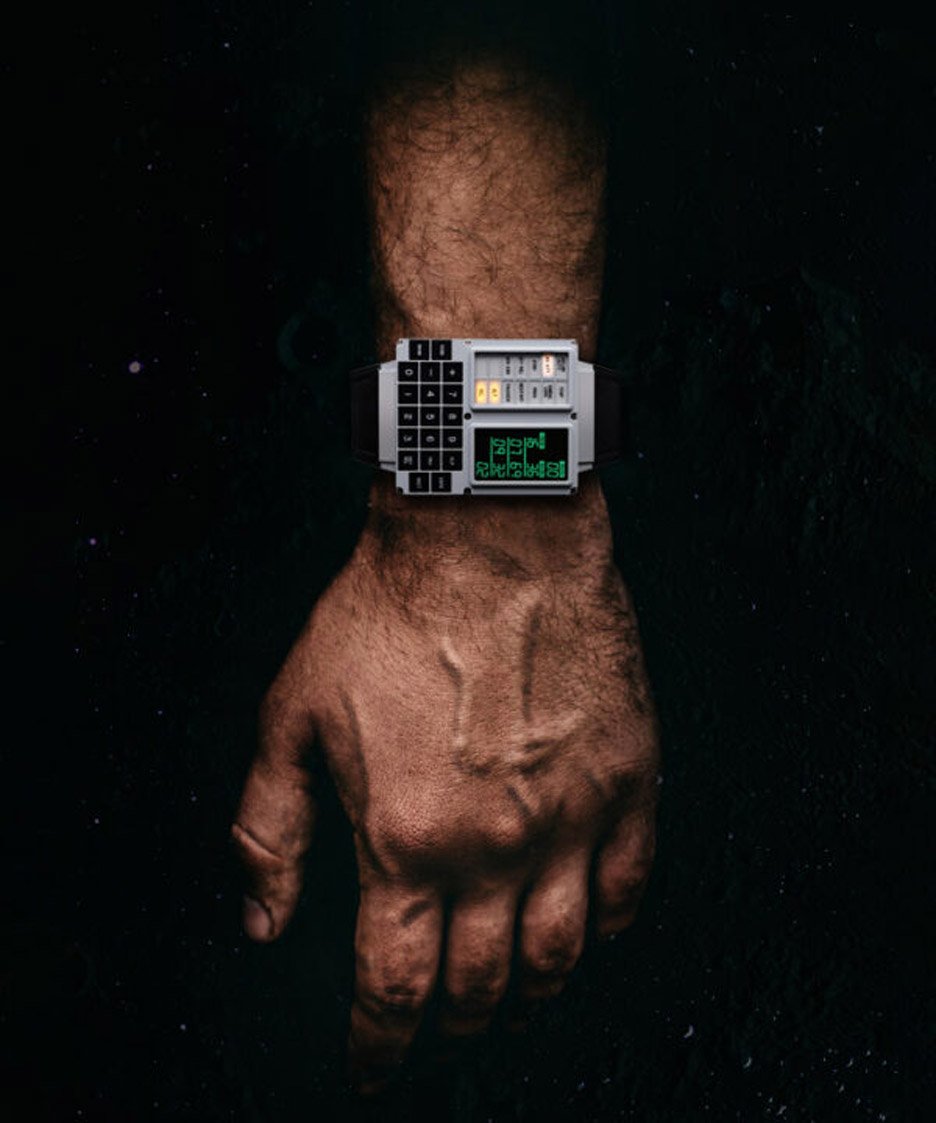
In the long run, Apollo Instruments hopes to grow this list of functions with its own software updates, as well as through programming contributions from its user community.
On the left-hand side of the watch face is the DSKY's distinctive annunciator panel, with 12 different light-up warning indicators under abbreviations such as UPLINK ACTY, indicating that data is being received from the ground, and PROG, indicating that the astronaut should input more information to complete a programme.
This is one area where Apollo Instruments, which did all of the DSKY Moonwatch design in-house, paid particular attention to detail, matching the original Gorton font on the indicators and working with lighting filter company Rosco to achieve authentic colouration.
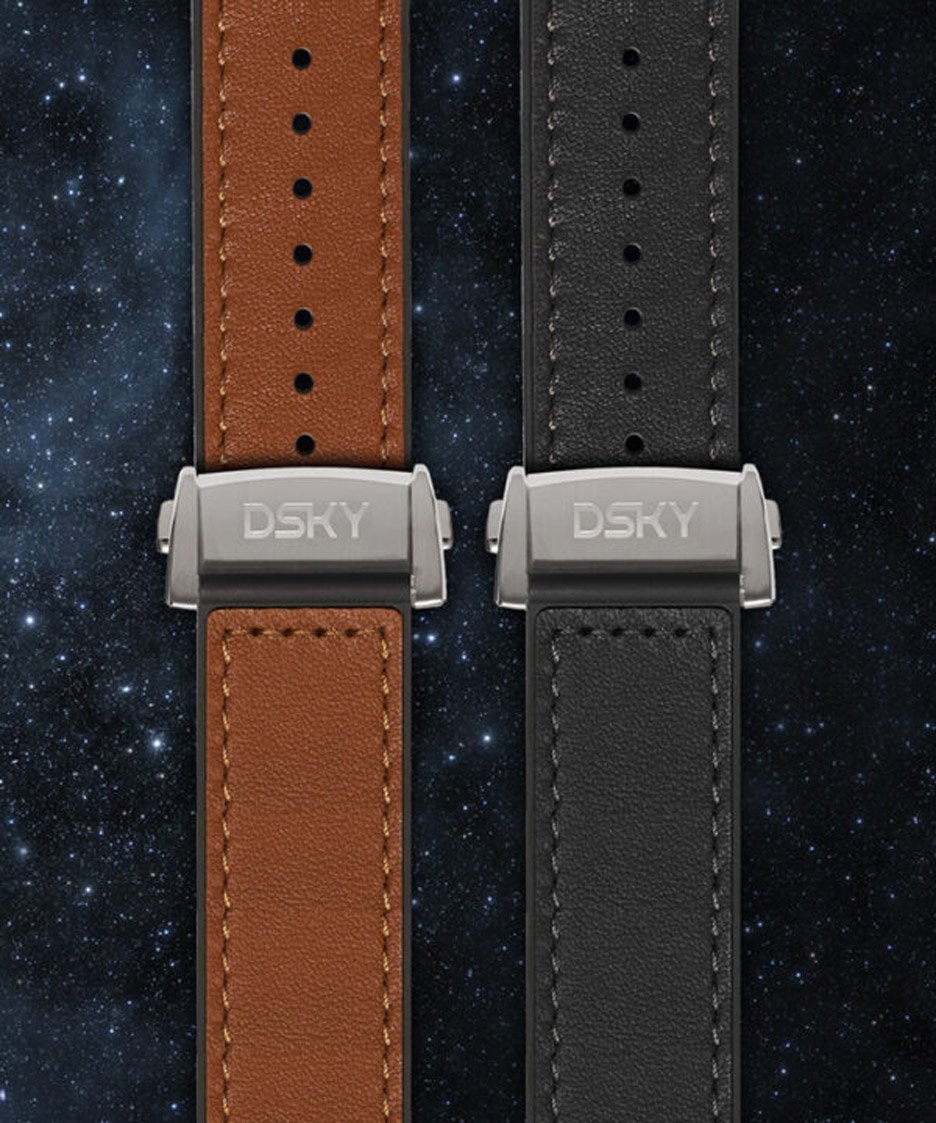
According to Clayton, to produce the desired level of light fill, each segment of the annunciator panel incorporates three micro LEDs, which match the three incandescent bulbs found in each segment of the original Apollo DSKY.
It was also a challenge to create the fine lettering that appears across the annunciator panel and keypad. The company tried digital printing and screen printing, but both methods failed to deliver the precision the designers sought.
"Ultimately, we adopted pad printing, a technique first employed in watchmaking during the late 19th century," said Clayton. "The chemically etched plates enabled us to reproduce the exceptionally fine detail necessary for the miniature lettering on the DSKY Moonwatch."
"This experience effectively illustrated how we often mistakenly assume that contemporary digital solutions are superior, whilst demonstrating that this assumption isn't universally true and that the traditional analogue methods developed by our ancestors deserve careful consideration."
Clayton, who worked in computer science and electronics before founding Apollo Instruments, said that orders for the watch have already come in from Apple co-founder Steve Wozniak, alongside current and former NASA personnel.
The DSKY watch is made in England from machined 316L grade stainless steel, a material often used in high-end watches, and finished with a ceramic coating that Apollo Instruments says is military grade.
Among the other high-end details are scratch-proof display glass, a Nappa leather strap with a flexible GPS aerial built-in, and a keypad with individual mechanical switches rather than a membrane for tactile feedback.
The DSKY Moonwatch could be paired with other moon mission-inspired clothing, such as Heron Preston's streetwear collection created in collaoration with NASA and Tom Sachs' Nike Mars Yard trainers, which are modelled on the boots of spacesuits.
The post DSKY Moonwatch brings mini Apollo space computer to people's wrists appeared first on Dezeen.
What's Your Reaction?






























_Elena_Uve_Alamy.jpg?#)



.png?width=1920&height=1920&fit=bounds&quality=80&format=jpg&auto=webp#)


















































